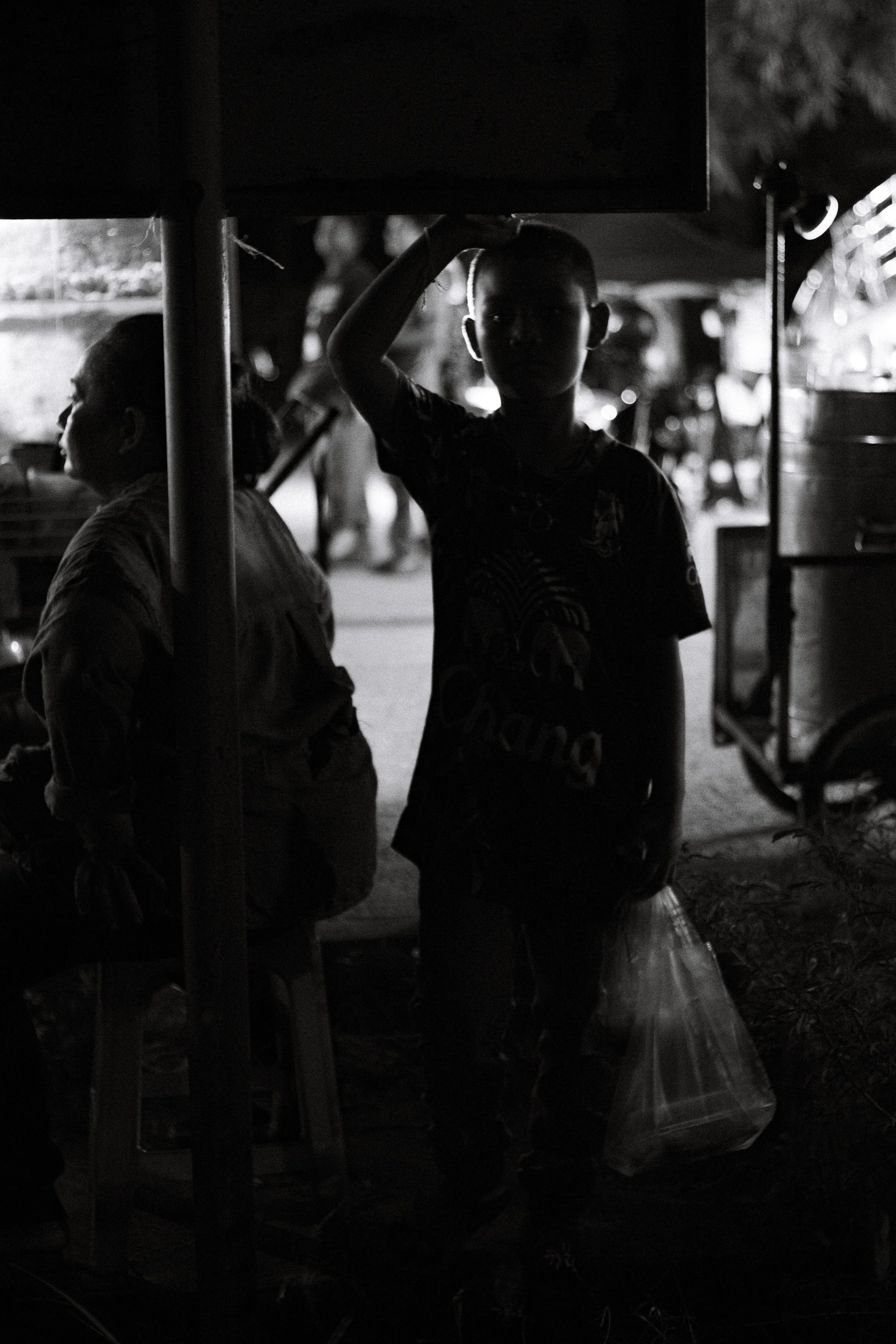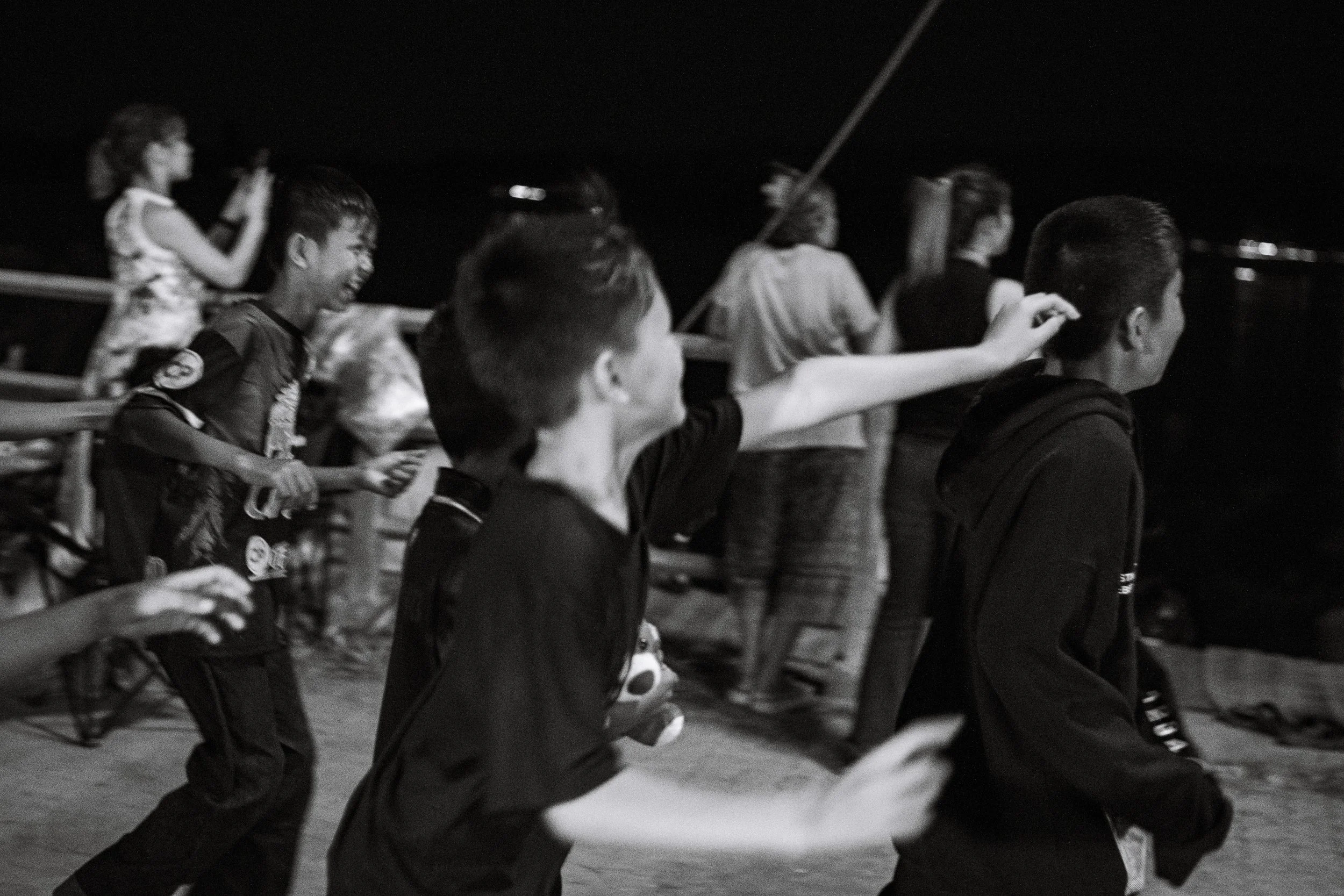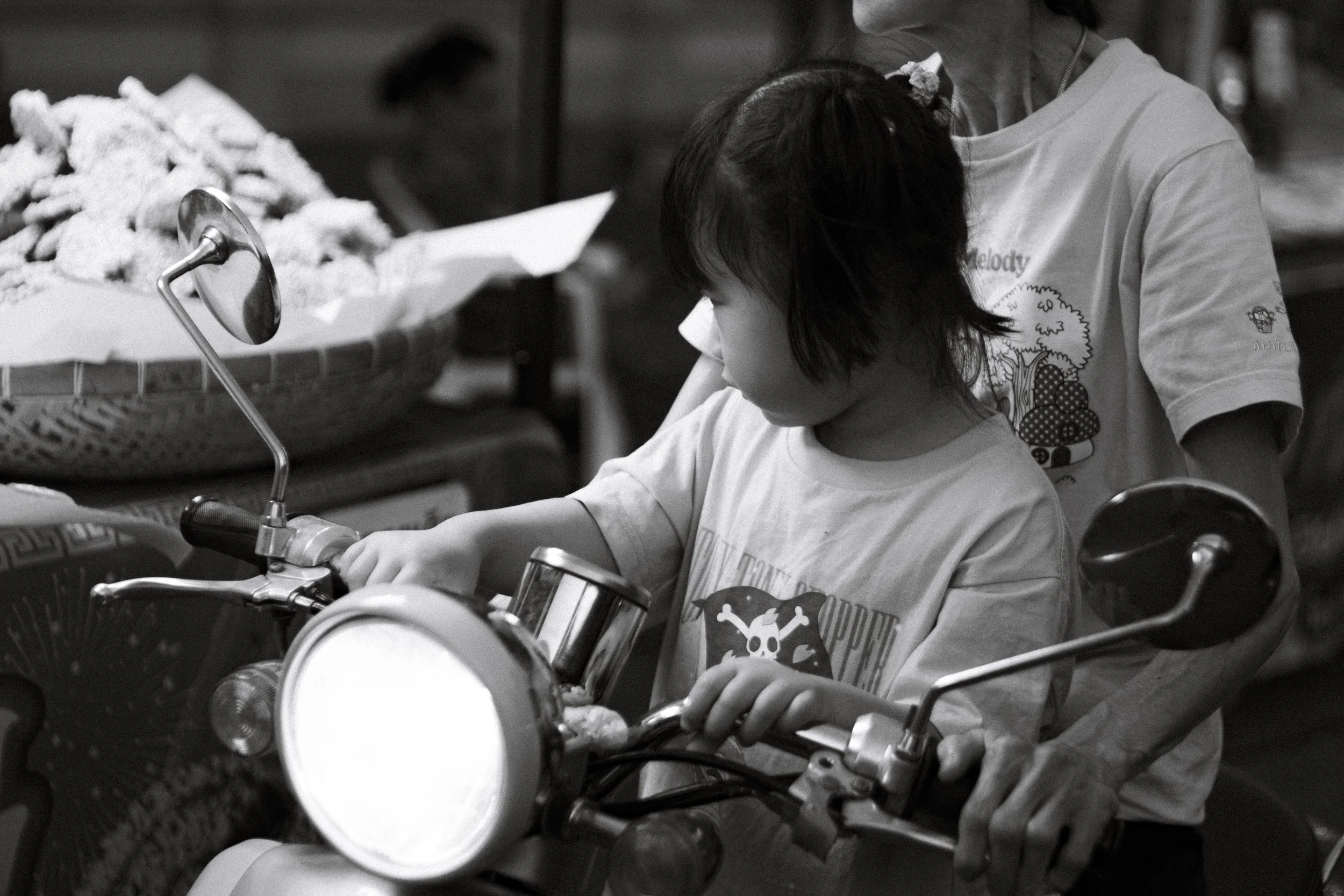Journey to Manual Lenses for Nostalgic Imagery
Fujifilm X-T5 with Thypoch Simera 35mm F1.4
Working together with Thypoch and FUJILOVE Magazine we came up with the concept of Manual Lenses for Nostalgic Imagery initially to be a single one-off article, the idea quickly snowballed into a six-month series. The initial idea was to shoot out a variety of 35mm F1.4 lenses over the course of October to December 2024 where all the Thai festivals take place, to see what would give the best results. Whilst I am passionate about contributing to the Fujifilm community, my approach to reviews is that of using the equipment in the field as it is meant to be used, and this seems to have stuck a chord. With the deadline of the first article quickly approaching (and the following five articles decided upon to be their own concepts) I prepared for the physicality of travel and wrestled with the mindset of having to capture images that will be seen by the Fujifilm community at large that not only are representative of my own high watermark but show the capabilities of Thypoch lenses. On top of this, not just measure up - but push the boundaries for what is expected from a FUJILOVE contributor.
Fujifilm X-T5 & Thypoch Simera 35mm F1.4 │ SS 1/550 ISO 3200
Fujifilm X-T5 & Thypoch Simera 35mm F1.4 │ SS 1/300 ISO 500
Having photographed these festivals on and off this past decade (and now consecutively for three years) I had an idea of what I was looking for. However, there has been a rapid trend of the festivals that once meant personal, oftentimes localized practices for good luck, good fortune and making merit become large and commercialized - much the same as the west has done with Easter and Christmas. The first festival on the calendar is one previously known about only in a specific region bordering Laos in the northeast. Taking place in Bueng Kan, in the province of Nong Khai “บั้บั้งไฟพญานาค” or loosely translated as “Naga Fireballs” is a ritualistic festival where people gather along the banks of the Mekong during the end of Buddhist lent to watch a phenomenon best described as “Will O’ the Wisp” rising from the river. Aside from the fireballs and Naga connotation, it is a time that the people whom lives depend on the rise and fall of the Mekong to appreciate what the river does for them and thank the Mekong deity Paya Nag. Paya Nag is considered so important that it is traditionally used as the figurehead of the Royal Barge and worshipped in the rural northeastern provinces.
Fujifilm X-T5 & Thypoch Simera 35mm F1.4 │ SS 1/125 ISO 12800
Fujifilm X-T5 & Thypoch Simera 35mm F1.4 │ SS 1/125 ISO 6400
As I rode my motorbike from nearby Udon Thani (around three hours away) passing gridlocked traffic, I knew that this year was not going to be the same as last. Passing billboard after billboard of “Welcome to Nong Khai, home of the Naga” and seeing masses of tourists, markets & music, I knew I had to dig deeper and go further. My partner Dao and I kept on riding until the streetlamps faded and roads became tracks with the Mekong to our left the only thing guiding us. By the time we found a sufficient gathering we had passed village after village and my hopes were getting low, then we came across what I was after. A small, local atmosphere of community. The word “vibe” is used amongst creative people an obscene amount but truly the “vibe” or “feel” of authenticity was worlds away from the mayhem and chaos of the tourist-oriented festivities. Some of the houses lining the river opened little stalls selling homemade foods, and similar things that they would usually take to market, children ran free, couples and families would send lanterns into the sky holding their prayers and wishes for the year ahead.
Fujifilm X-T5 & Thypoch Simera 35mm F1.4 │ SS 1/125 ISO 6400
Fujifilm X-T5 & Thypoch Simera 35mm F1.4 │ SS 1/125 ISO 6400
Fujifilm X-T5 & Thypoch Simera 35mm F1.4 │ SS 1/800 ISO 500
Despite a tight deadline and packed schedule, I made time prior to the “Fireball” festival to familiarise myself with the 35mm Simera, taking it to the local park and market as well as a friend's cosplay competition. I made sure in that time to familiarise myself with the focus throw, the depth of field achievable at different distances and how the lens reacted to different lighting directions. The Japanese have a saying; 人馬一体 - Horse and Rider, that one must match the other well. No matter how good one is independent of the other, both must work in unison. It is always wise to get used to your equipment before using it for anything important. It was imperative that I knew how the Simera would react wide open in low light situations. Even this did not prepare me for how dark it would be. Being used to constant illumination of some sort, the lack of ambient light was a concern. Though not concern enough for me to forsake the honest and authentic feeling that came from the small riverside gathering. I was also confident that should the first festival be a wash, I still had more to come. Little did I realise that this restriction forced some of my most creative shots and the lanterns in the dark may well be some of my favourite images I have ever made.
Fujifilm X-T5 & Thypoch Simera 35mm F1.4 │ SS 1/250 ISO 2500
Fujifilm X-T5 & Thypoch Simera 35mm F1.4 │ SS 1/680 ISO 500
With a break in-between the first and second festivals filled with travel to the capital of Bangkok, I thought the 35mm Simera would not be put to use before Loy Krathong in November, but a big part of Thai Cultural Arts is traditional masked theatre or “Kohn”, and I thought it would be a great fit to compliment the article. After returning from travels, I was delightfully surprised to see during the lead up to Loy Krathong many people gathering to make Krathong - the small “boats” with a candle. Made mainly from banana leaves and other organic degradable materials, these Krathong are lit and set to float on water. The original meaning of which is to place all the “wrongs’ of the past year into the vessel and cast it away, where they will be forgiven and able to start anew. Almost all traditional Thai festivals centre around water and its cleansing properties, Loy Krathong being the second most well-known Thai festival after Bhuddist New Year’s Songkran in April - which unfortunately in recent years taken a life all of its own. Loy Krathong is practised through all of Southeast Asia under different names and slightly varying practises. Here in the northeast of Thailand people will often place a few coins along with a burning candle within the vessel - something mischievous boys see as opportunity for some pocket money, fishing out Krathong downstream. Loy Krathong like the other festivities has not escaped capitalism and where once building a Krathong was a personal point of pride, buying the largest elaborate vessels has become a symbol of status and wealth amongst the growing middle class and what once was a peaceful ceremony has become opportunity for selfies and showing off.
Fujifilm X-T5 & Thypoch Simera 35mm F1.4 │ SS 1/150 ISO 3200
Fujifilm X-T5 & Thypoch Simera 35mm F1.4 │ SS 1/320 ISO 500
Fujifilm X-T5 & Thypoch Simera 35mm F1.4 │ SS 1/125 ISO 500
Third and finally from mid-November until Fathers Day on December 5th our strong Chinese community practices its Engkor and Dragon dances. It may be worth noting for some who may be confused, Northeast Thailand (known as Isaan) was initially heavily populated by a southern migration of Chinese and was once its own state before being unified and borders drawn separating Laos from Isaan, as such Thailand and especially Isaan have many similar practices today as China (Isaan has many of its own more Laotian than Thai). This blend of Chinese, Hindu and Khmer culture is what makes travelling through Thailand such a varied experience. It can often offend Thai people who see themselves as their own independent nation (Thailand literally meaning land of the Thai) but these are events that happened thousands of years prior and in my opinion, a point of diverse celebration not of alienation. Having grown up in the UK, which more or less celebrates its diverse past of Celtic, Roman, Saxon, Norman then finally Christian past (with many British festivals being steeped in Paganism), I find the importance of celebrating the root of a thing, as important as the celebration itself.
Fujifilm X-T5 & Thypoch Simera 35mm F1.4 │ SS 1/9000 ISO 200
Fujifilm X-T5 & Thypoch Simera 35mm F1.4 │ SS 1/9000 ISO 500
Manual Lenses for Nostalgic Imagery is available to read in issues 106 to 111 of FUJILOVE Magazine available on fujilove.com















